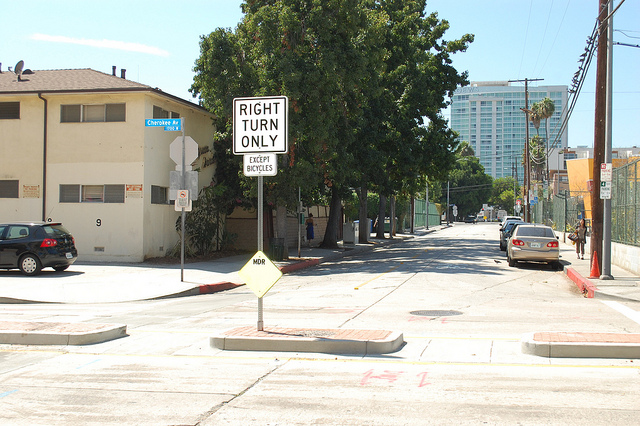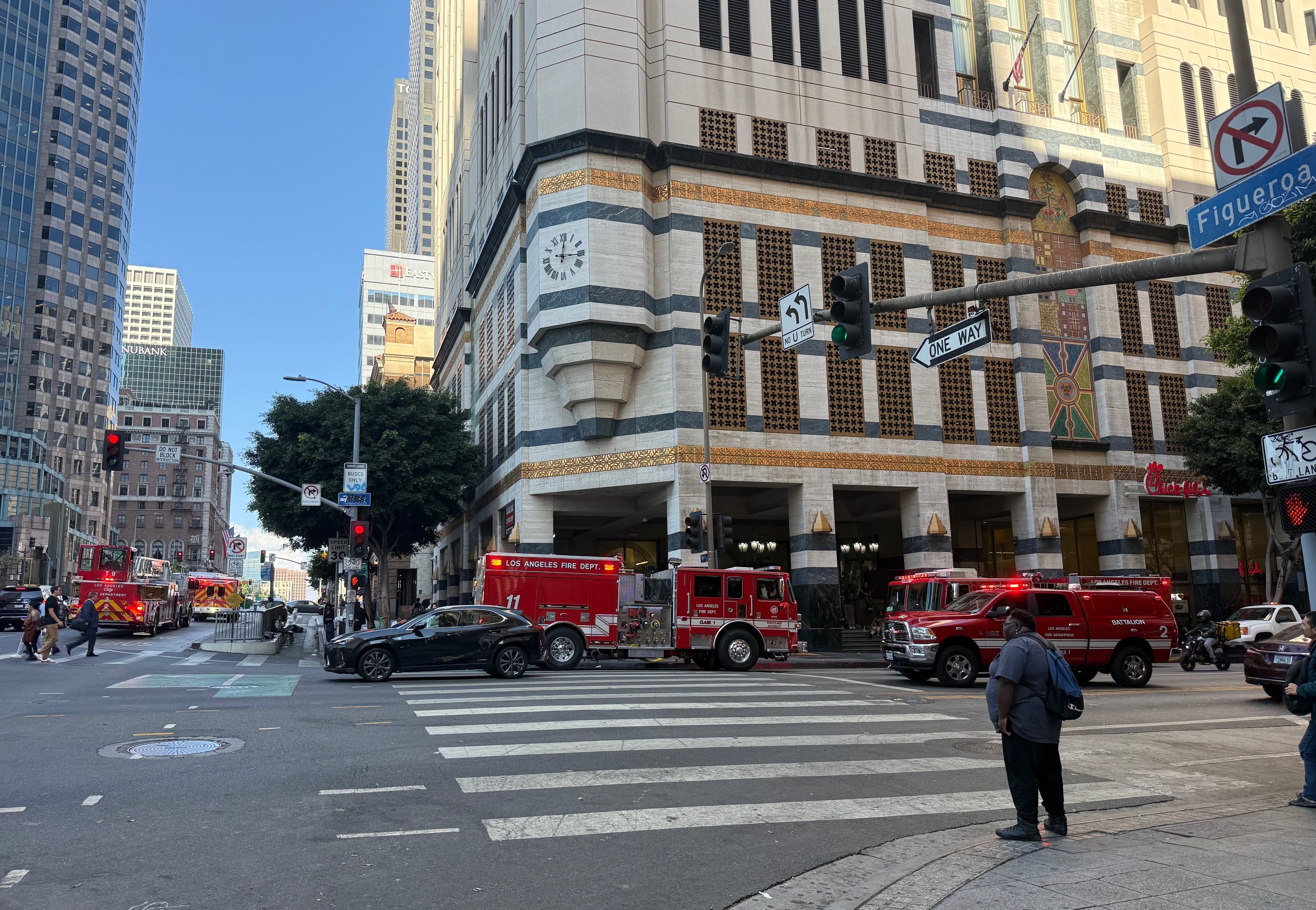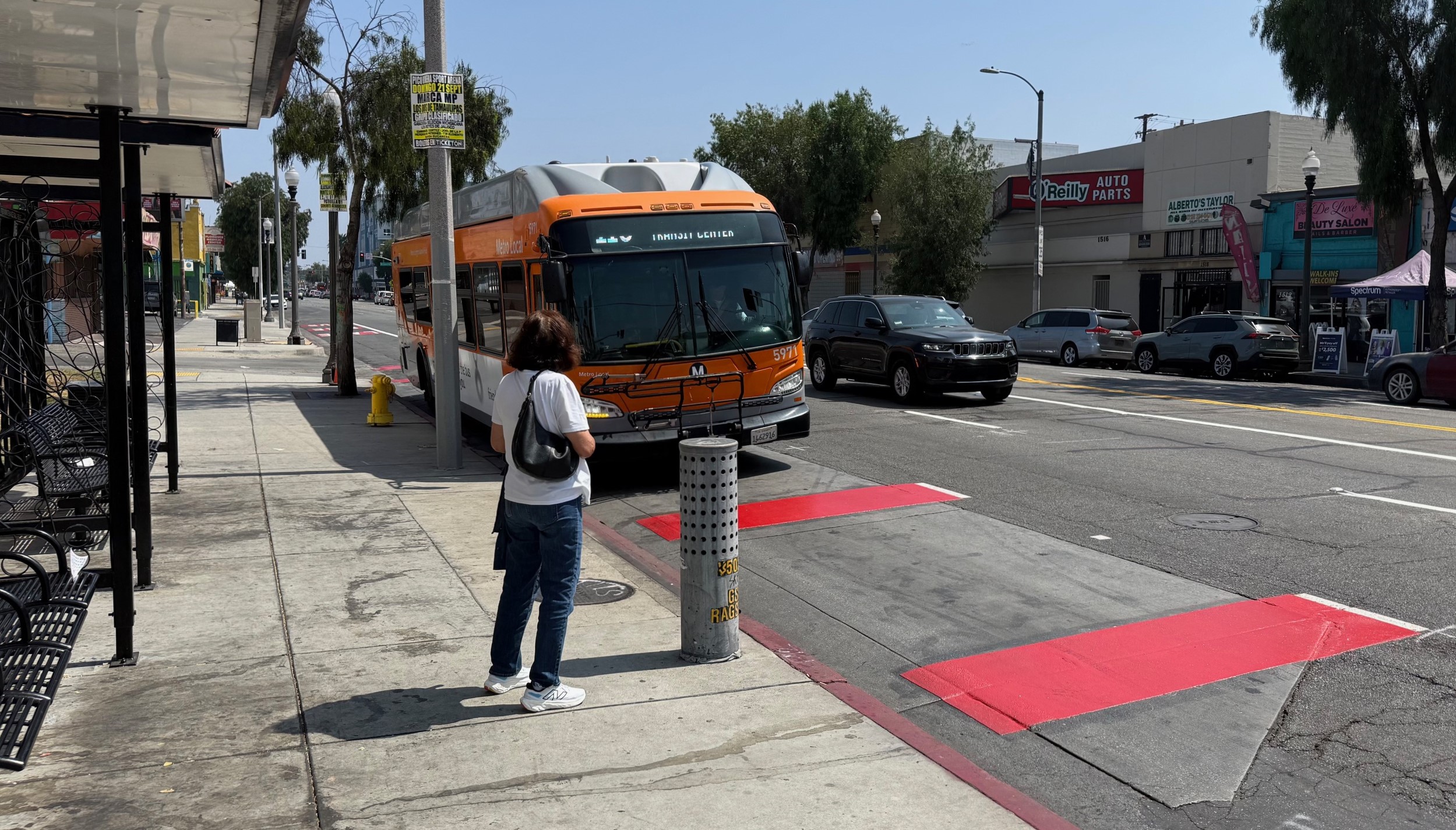"Bicycle Friendly Street."
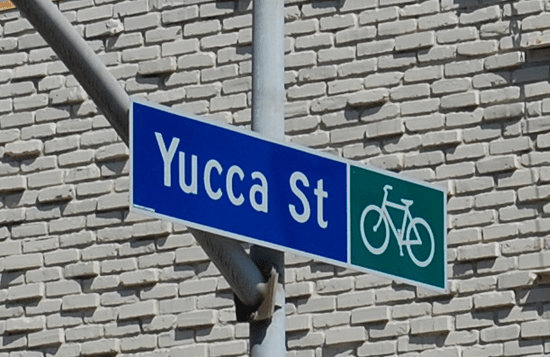
The term first appeared in the City of Los Angeles' Draft Bike Plan in 2009. Despite its nice sounding name, advocates groaned. Instead of the universally approved "Bicycle Boulevard," LADOT, City Planning and their consultants had coined their own phrase. At the time, it was widely assumed that whenever the City tried to innovate, disappointment would soon follow.
Today in Hollywood, just north of Hollywood Boulevard, the LADOT has christened their first "Bicycle Friendly Street". On Friday, I had a chance to ride on all .8 miles of the "Bicycle Friendly" Yucca Street. Back and forth, back and forth. I rode the length between Vine and Highlands four times, following the Sharrows.
I admit it. I liked it. And I wasn't alone.
"Designing the Yucca project was a collaborative process with the city and local residents and it's been a win-win for the community, explains Council Member Eric Garcetti. "It reduces cut-through traffic and creates a safer environment for bicyclists as well as pedestrians."
To earn the "Bicycle Friendly" designation, a street needs to undergo three treatments that make the street a friendlier place for cyclists to ride. The side effects of the new design and infrastructure are lower car speeds, fewer cars and a more pedestrian friendly environment. On Yucca, Sharrows direct cyclists across the .8 mile stretch with ease. Learning from past mistakes, the Sharrows direct cyclists away from turning lanes when necessary. Following a change in state guidelines, some of the Sharrows are even in travel lanes where there are no parked cars with the point four feet from the curb.
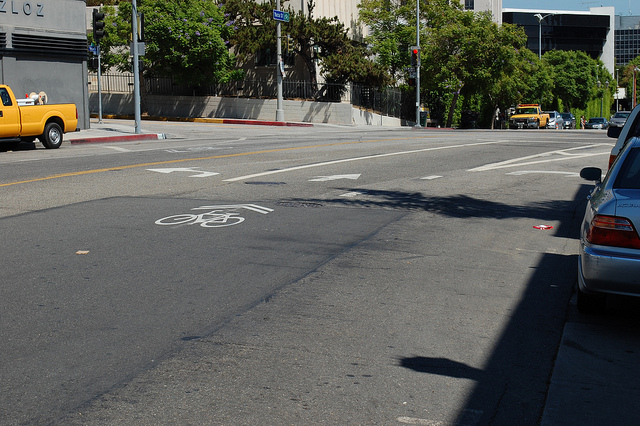
The Yucca Street bike signs have earned LADOT some positive press in social media after they were unveiled on the LADOT Bike Blog. Instead of the traditional "bike route" signs that even some members of LADOT Bikeways admitted were close to useless, these signs place the bicycle image next to the street name. It sends a clearer message that these streets are safe ones for bicycles more than the uniquitous and vague "Bike Route" signs that can be found nearly everywhere.
But the really exciting part is the third treatment.
Last year we wrote about an effort by Council Members Garcetti and Tom LaBonge to restrict car access to Yucca Street. The residential portions of the street were being used every day by commuters tired of the congestion on Hollywood Boulevard. To that end, pedestrian islands and signs forbid left turns and through traffic onto Yucca making it nigh impossible for use as a cut through. As a result, cars accessing the streets are almost uniformly cars making local trips.
"The bollards were originally put in to mitigate some negative impacts in the neighborhood," adds LaBonge. "This new route has turned a negative into a positive. This is another great addition to our bike infrastructure, though we have more work to do."
I didn't have my notebook or voice recorder with me, but I did stop to talk to some residents of the apartment buildings to ask about the changes to their street. To a person, they said there was less traffic at rush hour and the street was a better place to walk. The two cyclists I chatted with agreed, Yucca is one of L.A.'s best .8 miles of bikeways.
Of course, some communities have proven resistent to changes that make their streets more livable. While advocates point to the beautiful Vista Street Bike Boulevard in Long Beach, Yucca provides a case study closer to home. There's three major differences between Yucca and Vista.
First, Vista Street is entirely residential in its Boulevard while Yucca stretches east through some shopping areas. Second, while Vista uses traffic circles to slow cars, Yucca outright stops certain turns and through traffic, making a cut-through not difficult and slow, but impossible. Last, Vista Street is a mostly upper-class area of Long Beach where most people are homeowners. Despite the Lowes mixed-use development at its eastern end and its proximation to Hollywood, Yucca is mostly middle-income rental properties.
All in all, Yucca provides a great first start to the Bicycle Friendly Street Program. In some ways, this "Friendly" street is even superior to Long Beach's boulevards. It will be interesting to see going forward if Yucca is an outlier of the program, or an example of what can and will be done.

